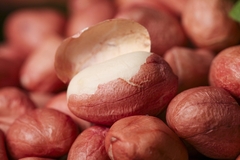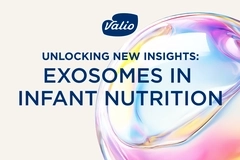Scientists present new search tool to better understand microbial metabolism
12 Feb 2024 --- Researchers developed a new tool — microbeMASST — that instantly matches microbes to the metabolites they produce without prior knowledge, using a database of over 60,000 microorganisms. The tool, presented in a new study, aims to help scientists better understand the metabolism of microorganisms, as current techniques used to study this process make it difficult to decode microbe interactions and activities.
Users can employ the taxonomically informed mass spectrometry (MS) search tool to search known and unknown spectra and link them to their microbial producers, helping to enhance the understanding of microorganisms’ role in ecology and human health.
Nutrition Insight discusses the new tool with senior study author Pieter Dorrestein, Ph.D., professor of pharmacology and pediatrics at the University of California (UC) San Diego School of Medicine, US.
“We anticipate that microbeMASST will aid in understanding the functional roles of microbiomes across various ecosystems, ranging from environmental habitats like coral reefs, plants and animals to those within the human body.”
“Specifically, regarding humans, we aim for this resource to tackle challenging inquiries, such as identifying which gut metabolites traverse to the brain or other distant organisms and discerning the microbial species responsible for their production.”

Tool development
MicrobeMASST, presented in the study published in Nature Microbiology, was developed by researchers from UC San Diego, collaborating with scientists around the world in the university’s Collaborative Microbial Metabolite Center, an initiative supported by the National Institute of Diabetes and Digestive and Kidney Diseases.
The researchers collected over 100 million data points from 60,000 distinct microbial samples, including microbes from plants, soils, oceans, lakes, fish, terrestrial animals and humans. MicrobeMASST can detect which microbes are present in a sample by cross-referencing it with this library of individual microbes.
While microbes are crucial in human health and critical environmental processes, the researchers note that the metabolic potential of microbial communities is often overlooked in modern experiments that typically look at microbial metabolism with a wide lens.
“One of the challenges of studying microbes at the molecular level is that it’s difficult to tell which microbes are producing which molecules unless you already know what you’re looking for,” explains the study’s first author, Simone Zuffa, a postdoctoral researcher at UC San Diego.
“If you think of colonies of microbes as crowded parties with lots of people talking, our current experiments can only record the sound, but we want to figure out a way to unscramble that audio to figure out who is saying what.”
Application areas
Beneficial microbes are essential for human health by colonizing parts of the body, such as the gut and skin, to protect it against external pathogens, support nutrient absorption and regulate the immune system. Disruption of microbial communities is associated with various diseases, while research links a diverse microbiome to many health benefits, such as mental health.
The microbeMASST will help researchers examine the role of the microbiome in health conditions such as liver diseases, inflammatory bowel disease, diabetes and atherosclerosis, states Dorrestein.
“In the past decade, a lot of research has implicated the role of the microbiome in the health of ecosystems. This is due to the molecules, proteins, RNA, DNA and small molecules they consume and produce. Although good tools exist for gaining insight into the first part of the central dogma — DNA, RNA and proteins — there is a void in the discovery of metabolites and their candidate producers.”
“Thus, through a worldwide community effort that helped curate this dataset, we now have a tool, albeit imperfect, that can connect molecules detected from complex samples to their microbial origin.”
 The microbeMASST will help researchers examine the role of the microbiome in health conditions.Dorrestein hypothesizes that researchers can use the tool to “discover organisms that make beneficial nutritional molecules such as vitamins, neurotransmitters, or with anti-inflammatory activities that might be of interest as additives to foods.”
The microbeMASST will help researchers examine the role of the microbiome in health conditions.Dorrestein hypothesizes that researchers can use the tool to “discover organisms that make beneficial nutritional molecules such as vitamins, neurotransmitters, or with anti-inflammatory activities that might be of interest as additives to foods.”
“There is also a related tool called FoodMASST that searches for molecules in 3,600 foods. When the two are used in conjunction, one can assess what food-derived molecules potentially have a microbial origin.”
US San Diego researchers developed this tool in 2022 to help the scientific community gain insight into the molecules present in food and beverages, as it helps to assess the potential uniqueness of dietary biomarkers to represent specific foods or food classes.
Technical limitations
Although this is the first tool to detect microbes in a sample, Dorrestein cautions that users should consider its limitations.
“The database powering the search engine relies on public data but lacks corresponding sequencing information. Consequently, the taxonomy cannot be verified, and phylogeny can only be assigned to a small subset based on the strain name. In the future, we aim to integrate datasets where sequencing is linked to the sample run by metabolomics.”
Moreover, he notes that public resources from which these data were drawn currently struggle to effectively connect to background data when microbes are not cultured in the media. “While we have background controls marked, the specific media controls for a given sample are not linked.”
“Also, when collecting metabolomics data, it is nearly unavoidable to have some carry-over from sample to sample. Therefore, it is crucial for key molecules of interest to examine peak intensities in relation to background controls as a follow-up step.”
Next steps
Dorrestein underscores that most microbial and microbiome-derived molecules currently lack annotations.
“To address this gap, we are launching a large campaign to annotate MS/MS spectra associated with microbial molecules. We have established an ecosystem for community microbial metabolite annotations, which is ongoing as part of the collaborative microbial metabolite center aimed at aiding and developing tools for mechanistically interpreting the microbiome, diet and its role in disease.”
While the resource primarily relies on data obtained from monocultures, many molecules are produced by microbial communities or involve interactions among multiple members, he continues. “Therefore, we aim to include data from two or more interacting organisms and cultured microbial communities with associated sequence data.”
“Furthermore, we are enhancing the output to enrich our understanding of each microbial metabolite. We are currently working on expanding the analysis ecosystem to establish connections to health conditions, interventions and more, based on public untargeted metabolomics data.”
Meanwhile, the US National Institute of General Medical Science has awarded a US$1.9 million research grant to Jordan Bisanz, assistant biochemistry and molecular biology professor at the Penn State Eberly College of Science, to help understand how complex communities of microbes impact human health.
By Jolanda van Hal















